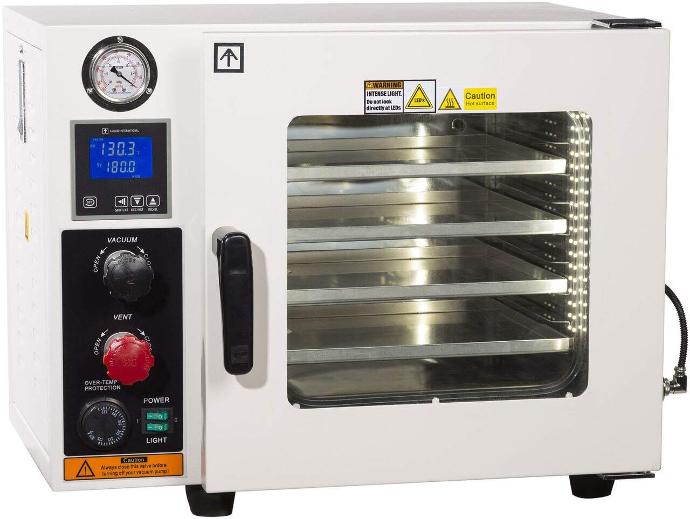-
Vacuum Drying Ovens
-
Forced Air Drying Ovens
Laboratory Oven & Drying Ovens
A laboratory oven is used for scientific, pharmaceutical, and industrial applications that require high-volume thermal convection. Designed to maintain precise and uniform temperatures, it is essential for drying, heating, sterilising, curing, and testing.
There are two main types of laboratory ovens, each providing different advantages for various settings and applications:
Vacuum Oven
A vacuum oven lowers the boiling point of liquid, creating a low-pressure environment inside the chamber. This enables faster and more efficient drying at lower temperatures, making it ideal for drying delicate materials that are prone to degradation at high temperatures or in oxygen-rich environments.
Vacuum ovens are best for determining moisture content, desiccating samples, outgassing solvents or resins, and annealing metals.
Forced Air Oven
Compared to vacuum ovens, a forced air oven can reach higher temperatures and have shorter heat-up and recovery times. It ensures consistent temperature and uniform heating of samples by using a fan to circulate heated air evenly throughout the chamber.
Forced air ovens are ideal for general lab tasks that don’t require precise temperature control or protection from oxidation. These include sterilisation of glassware, baking ceramics or polymers, curing coatings or adhesives, and ageing plastics or rubber.
Browse Our Range of Laboratory Ovens in Australia
Across International has a comprehensive range of laboratory ovens with various features to suit different scientific and industrial applications. Designed to meet the demands of modern laboratories, each laboratory drying oven in our range is engineered to deliver performance and reliability in even the most demanding lab environments. Explore our selection here
Browse our range of Drying Ovens
|
|
|
|
|
|
|
|
|
|
|
|
|
|
|
|
|
|
|
|
|
|
|
|
|
|
|
|
|
|
|
|
|
|
|
|
|
|
Why Choose Across International for Lab Equipment?
Choose Across International for your lab equipment needs, where the highest quality standards are paramount. Our products undergo rigorous testing to ensure reliability and performance.
We pride ourselves on exceptional customer support. We offer pre-sales consultations to help you find the right tools, as well as comprehensive after-sales service for ongoing assistance. Our dedicated technical support team is always ready to address queries, ensuring a seamless experience from purchase to application.
Shop Our Laboratory Equipment Range
Explore our wide selections ranging from basic tools to specialised instruments, catering to diverse fields and applications:
- High frequency lab induction heaters
- Laboratory furnaces
- Rotary evaporators
- Vertical furnaces
- Chillers and heaters
- Peristaltic pumps
- Analytical balances
- Laboratory freezers and refrigerators
- Laboratory distillation equipment and kit
- Ball Mills
- Homogenisers lab equipment
- Medical face masks and wipes
- Ovens
- Laboratory reactors
- Laboratory presses
- Vacuum pumps and accessories
Across International offers high-quality laboratory equipment, ensuring reliability and optimal performance for your everyday applications. Each product is designed to meet the highest standards, giving researchers confidence in their results.

